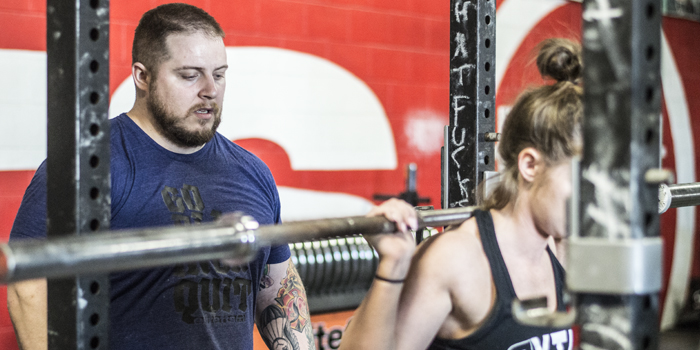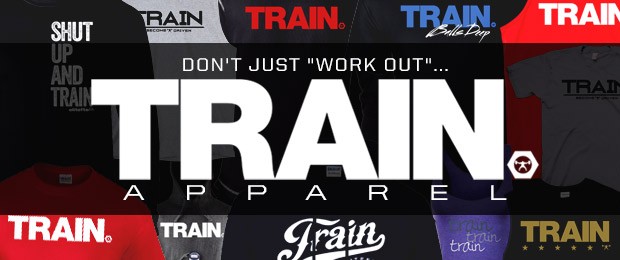
One-on-one training is still the most profitable time spent in many gyms. In my area (group training), it's also the most overlooked.
Without a model, many gyms struggle to decide a price for their personal training sessions, so they underprice the service. Many aren't sure what to pay their coaches, so they give an inflated percentage. The result is that one of the most important revenue streams in the gym is virtually nullified.
First, let's talk about pricing.
I've been on the phone with over 1000 small gym owners. Over 98% of those owners (go ahead and check my numbers) based their prices on another local gym. The other said, "I just guessed." But where did the other local gym get their prices? 98% took them from a previous gym. And 98% of those did the same. The bottom line: very few gyms have based their pricing on what the owner actually needs to earn. Isn't that odd?
Next—and perhaps even stranger—is that the group training facility's price for personal training is less than a nearby Globo Gym's rate for the same service. Ironically, the professional coach with tons of education charges less than the teenager killing time until his acting career takes off! Even when the gym owner's groceries are on the line, they routinely undervalue the time they spend 1:1 with clients who don't want to exercise in a group.
I'll get off my soapbox now.
If a coach is starting from square one on pricing, I suggest they look at what local Globo Gyms are charging, and then add 10%. That rate SHOULD be double, but most gym owners suffer from projection bias (they project their budget onto their clients), so they'll struggle to sell a service they can't afford themselves.
RECENT: An Introduction to Affinity Marketing — F Your Funnel
Let's say the base rate for one hour of personal training is $70 (this is the rate at my gym).
- Base Rate: 60 minutes of PT = $70.
Let's use that base rate to first establish a 30-minute PT rate. Since the trainer has to do most of the same work before and after the session, a 30-minute PT session should be more than half the price of an hour session. At my gym, that means a 30-minute session is $45.
- Base Rate: 30 minutes of PT = $45.
Next, we build out our packages.
Research on pricing services suggests that a 5% discount is enough to trigger action, and that the benefits of discounts start to decline above 15%. In other words, a 15% discount will trigger the same buyer response as a 25% discount.
With those numbers in mind, we give a 5% discount for the purchase of 10 sessions, and a 10% discount for the purchase of 20 sessions — only the purchase of 50 sessions in advance earns a 15% discount.
- Package Rate: (10) 60-minute sessions = $665 ($70 - 5% x 10)
- Package Rate: (20) 60-minute sessions = $1260 ($70 - 10% x 20)
You can use these examples to figure out pricing for other packages.
Finally, group training packages can yield a much higher value than most group classes if priced properly. Here's how we build out 2:1, 3:1 and 4:1 training rates:
2:1 — Double the rate and subtract 15%.
- Base Rate: 60 minutes of 2:1 training = $119 (70 x 2 - 15%)
- Base Rate: 30 minutes of 2:1 training = $76.50 (45 x 2 - 15%)
3:1 — Triple the 2:1 rate per person and subtract 15%.
- Base Rate: 60 minutes of 3:1 training = $151.73 (119/2 x 3 - 15%)
- Base Rate: 30 minutes of 3:1 training = $97.54 (76.50/2 x 3 - 15%)
4:1 - Quadruple the 3:1 rate per person and subtract 15%.
- Base Rate: 60 minutes of 4:1 training - $171.96 (151.73 / 3 x 4 - 15%.)
- Base Rate: 30 minutes of 4:1 training - $119.55 (97.54 / 3 x 4 - 15%.)
Obviously the gym is making more and the clients are paying less. Set up good rules around attendance, late cancellations, and package purchase to make sure you're always having people show up together.
Now, how much should you pay the trainer doing the training?
RELATED: Real People, Real Results — 8 Lessons in Training, Nutrition, and Business
My record for hours of 1:1 training in one day is 13. I did not want to live after that day. Most gym owners can't handle more work, and they'll recruit other trainers to do personal training sessions under their umbrella. Done right, it can create a fantastic new revenue stream for the gym, help a new trainer build a career, and provide the best experience for the client.
I write a lot about the 4/9 model for paying staff. In a nutshell, 2/9 of your gross revenue should cover your fixed costs, like rent and electricity. 3/9 of your gross revenue should pay the owner and buy new toys. And 4/9 (the largest chunk) should go to the trainers working with the clients.
But the trainers don't care about percentages; they care about dollars.
At a Globo Gym, the trainer would earn far less than 4/9 on the training they delivered. If the Globo Gym charges $70, they're probably paying the trainer $15-20 for the session. Under the 4/9 model, we're paying the trainer $31.11 for the same. And if the gym takes my advice and adds at least 10% to the Globo Gym's PT rate, the trainer earns even more.
Better, the trainer is incentivized to book the highest-value service (4:1 or small-group PT) because she can net more per hour. In our example, the trainer would be paid $75.66 per hour for 4:1 training. That's pretty good!
When presenting the option to your clients, focus on the benefits: personalized attention, private environment, flexible schedule. When presenting PT to your staff, focus on the actual dollar amount earned instead of the percentage.
We did over 3,000 PT sessions at only one of my gyms last year. It's more than an important revenue stream — it's often the best possible service to provide your clients and coaches.











4 Comments